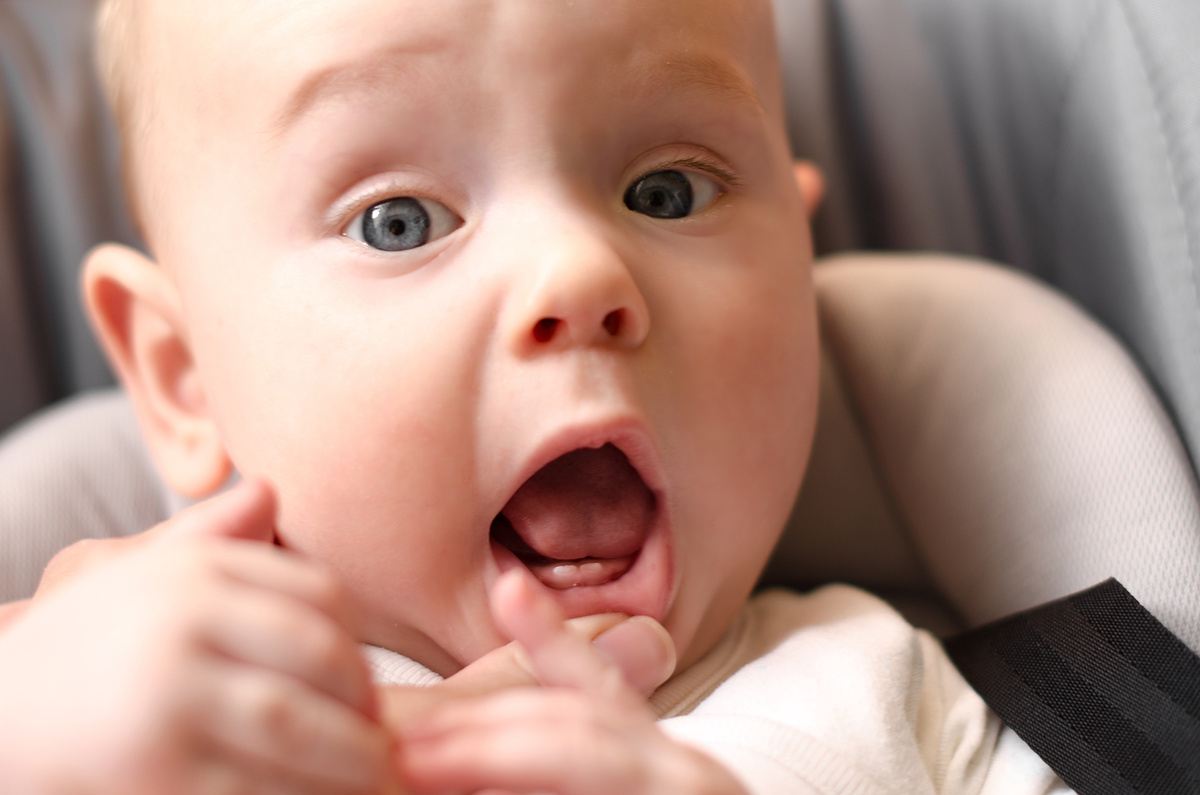Is your little one suddenly fussy, drooling excessively, and chewing on everything in sight? You might be witnessing the beginning stages of teething, a natural but sometimes uncomfortable milestone in your baby’s development. While watching those first tiny teeth emerge is exciting, the process can be tough on babies and parents alike. Understanding these signs of teething and how to provide comfort with gum massages, cooling relief, and teething toys can make this developmental stage much easier for everyone in your household.
At ABC Children’s Dentistry, Dr. Jeffrey Singer and our team love helping families navigate all stages of dental development, from that first tooth to the final baby tooth loss. Our fun, engaging office in Voorhees creates a magical environment where children actually enjoy dental visits! Dr. Singer is known for his goofy, child-friendly approach that puts even the youngest patients at ease, setting the foundation for positive dental experiences that last a lifetime.

3 Common Signs of Teething
Teething typically begins around four to seven months, though some babies may start earlier or later. Every baby experiences teething differently, but there are several common signs that those little pearly whites are making their way to the surface, including the following:
Changes in Behavior
During the start of the teething process, your normally happy, content little one might suddenly become irritable, clingy, or fussy without any apparent cause. Sleep disruptions are also common during teething periods, with babies waking more frequently or having difficulty settling down for naps and bedtime due to fewer distractions at night to take their mind off the discomfort.
Physical Symptoms
Along with behavioral changes, the following physical symptoms may accompany teething:
- Excessive drooling (sometimes causing facial rashes)
- Swollen, tender gums that appear red or bluish
- Constant chewing, biting, or sucking on fingers, toys, or anything within reach
- Rubbing their face or pulling their ears
- Refusing to eat or showing discomfort during feeding
- Low-grade temperature (below 101°F)
It’s important to note that while mild temperature elevation can occur with teething, high fevers are not a typical teething symptom. If your baby develops a temperature above 101°F, it’s best to contact your pediatrician, as this likely indicates an illness unrelated to teething.
Timing of Symptoms
Teething symptoms often appear several days before the tooth breaks through the gum and may continue for a few days afterward. Once the tooth fully emerges, most babies experience relief from discomfort until the next tooth begins to erupt.
While the timing can vary widely from baby to baby, most children follow a general pattern for tooth eruption. The lower central incisors (bottom front teeth) typically emerge first, followed by the upper central incisors (top front teeth). By age three, most children have their complete set of 20 primary teeth.
Safe and Effective Relief Methods
Seeing your baby in discomfort is never easy, but there are several safe, effective ways to help relieve teething symptoms. While we recommend avoiding teething gels containing benzocaine, homeopathic teething tablets or gels, and amber teething necklaces, the following methods can help alleviate your child’s discomfort:
Cool Comfort
Cold temperatures can help numb sore gums and provide significant relief, so you can try the following methods to provide this cool relief:
- Refrigerated (not frozen) teething rings or pacifiers
- Chilled washcloths (dampen, fold, and refrigerate for 30 minutes)
- Cold metal spoons (refrigerated, not frozen)
- Mesh feeders with chilled fruits like banana or apple
Always supervise your baby with any teething object to prevent choking hazards. Avoid freezing teething toys, as extremely cold items can damage your baby’s sensitive gum tissue.
Gentle Gum Massage
Sometimes, the simplest solutions are the most effective. Washing your hands thoroughly and gently rubbing your baby’s gums with a clean finger can relieve pain. The counter-pressure helps ease the discomfort as teeth push through the gums.
For extra soothing power, you can wrap your finger in a cool, damp washcloth before massaging the gums. The mild pressure combined with the cooling sensation often gives babies welcome comfort.
Safe Chewing Options
Babies instinctively want to chew when teething, as the pressure helps counteract the discomfort of emerging teeth. Providing the following safe, appropriate items for chewing can offer significant relief:
- Silicone or rubber teething toys (preferably with different textures)
- Clean, wet washcloths
- Specially designed teething biscuits (for older babies who are already eating solids)
- Wooden teething rings made specifically for babies (untreated wood only)
Always inspect teething toys regularly for damage and replace them if they show signs of breaking down.
Get the Support You Need for Your Child’s Teeth With ABC Children’s Dentistry
Teething is just the beginning of your child’s dental development journey. At ABC Children’s Dentistry, Dr. Singer and our team are passionate about making every stage of that journey positive and stress-free. From our themed office to Dr. Singer’s playful personality and genuine skill with children, we’ve created an environment where dental care becomes an adventure rather than a chore.
Recognized as a Top Dentist by Philadelphia Magazine and numerous professional organizations, Dr. Singer combines clinical excellence with a uniquely engaging approach that children love. We’re ready to be your trusted partners in your child’s dental health from that first tooth and beyond. Contact our Voorhees office today at (856) 783-3515 or use our contact form to get started!






